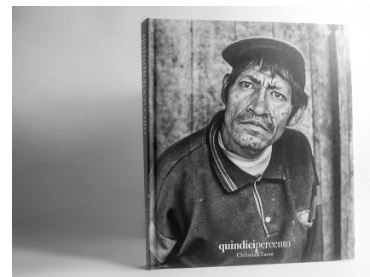Introduction to the Book: Christian Tasso, Quindicipercento
Introduction text by Giovanna Calvenzi, to Christian Tasso, Quindicipercento.
The first part of the ongoing project “QuindiciPercento” features Ecuador, Romania and Nepal and is presented in a limited edition book and travelling exhibition, aiming to raise awareness among the public of the lives of men and women affected with disability in different social and cultural contexts.

What do we look for today in photography? Over the course of time we have had many different expectations: at the beginning of its history we wanted it to show us mysterious lands far away, to portray faces never seen before, to tell us what was happening, then to document, to excite us, to move us, to expose and sometimes even to change the way things are. Today, in a world clouded by billions of intangible representations of us, we ask only one thing: to be itself, true photography, produced by those who understand its infinite potential. A tool ever, and more than ever, capable of presenting the world to us, of introducing us to the unknown, of revealing joys and tragedies far away.
Christian Tasso demands something of it that is small yet enormous, that is, to go with him on his travels, to be the medium that allows him to see, to learn and to share with those he meets and those who will then see his work. That is what he has done and what he will continue to do. He has chosen a path that is defined by commitment, to travel and work alongside “that slice of humanity that keeps going despite the barriers”, as he himself writes, men and women with heart-breaking stories, exceptional courage and a capacity for life that becomes a lesson in hope.
His story takes us from Italy to Ecuador, from Romania to Nepal. Christian Tasso uses the noble language of photojournalism with an innate skill, sensitive to the places, the people, and to events large and small. He portrays with equal empathy the smiles of children, the grasping hands, the hugs of support, the eyes that cannot see, and he seems to make his own the words of Maurizio Chierici, “the eyes that collect unhappiness must stay dry.”
Christian Tasso’s “dry” eyes are however able to walk that fine line between participating and sharing, to move between normality and its variations, between misery and the ability to live nevertheless. He offers us a real lesson in photojournalism that uses a simple and cultured language and that allows us to discover and to participate. His pictures are devoid of piety, and are the greatest gift he can give to his readers: his clear view shares with simplicity the worlds that lie before his lens. All his subjects receive the same respect, overcome handicaps and hardships, brothers and sisters from different countries and with differing fortunes who travelled with him on a part of his journey.
Christian Tasso asked of photography only that it accompany him on his travels, but in reality its images document, excite, move, expose and will, we hope, also contribute to changing the way things are.


